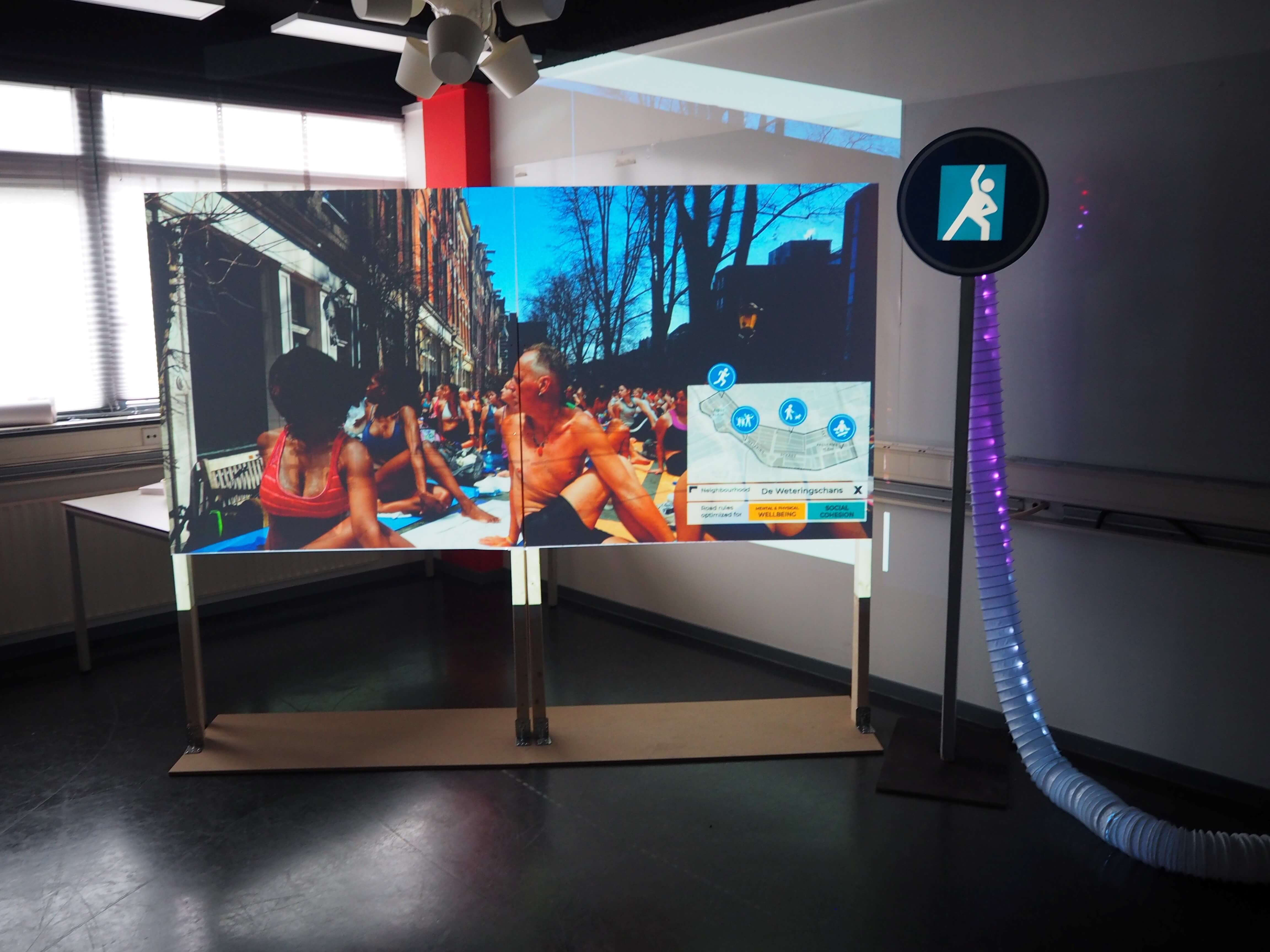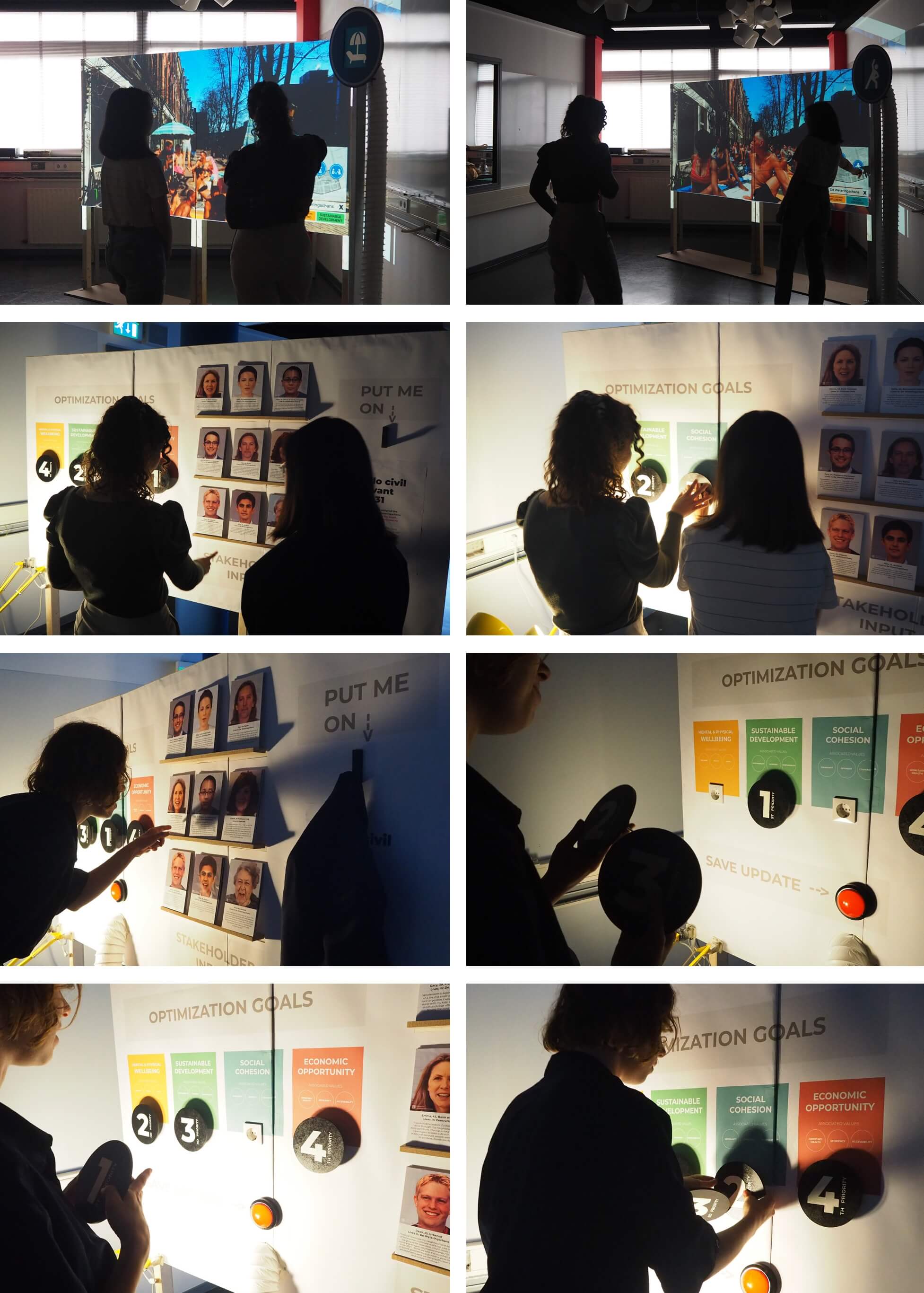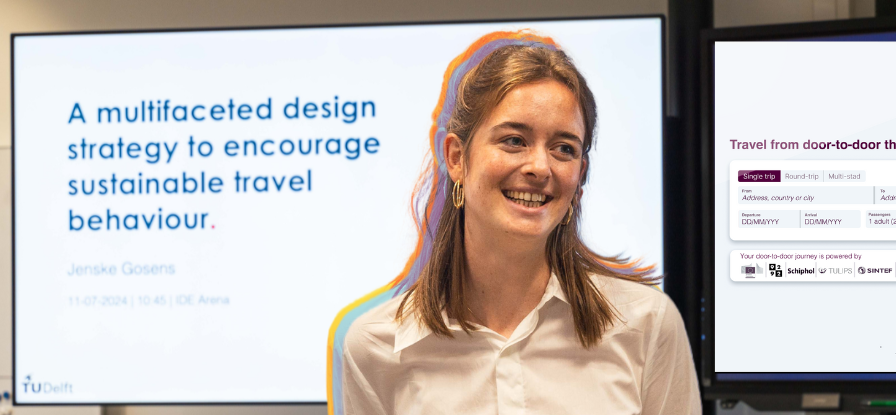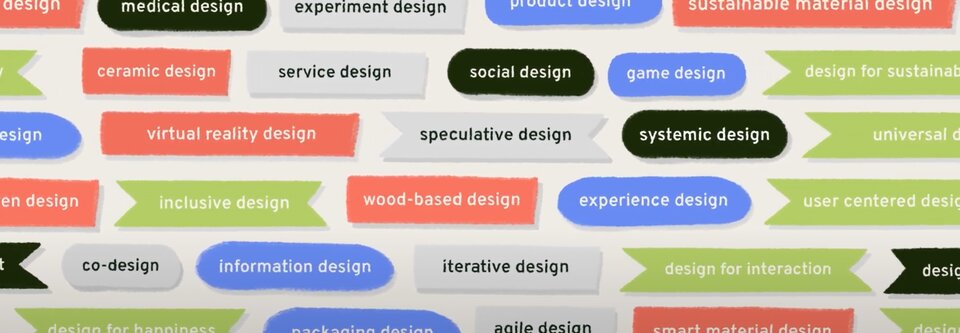How to embed citizens’ values in smart traffic systems
We navigate the city streets via road signs, surface markings and apps. These tools are designed to communicate quite static traffic rules. The ‘Code the Streets’ system is being developed to allow for road space to be used for different activities throughout the day, such as the (un)loading of goods, or a neighbourhood barbecue. But how do we choose, in a fair way, what our roads will be used for? IDE alumni Fabian Geiser designed a system map that helps to embed stakeholder values like safety and inclusivity into navigation systems.
New technologies such as mobility apps, real-time traffic data tracking, and information sharing devices provide us with useful mobility information. As shown by the Code the Streets project, these technologies can helps cities communicate information about things like school zones, congestion and pollution to its citizens via mobility providers and suggests alternative route options. This way, navigation tools can help encourage residents to choose alternative, more social, routes.
Ongoing stakeholder participation and adaptation
This project, together with the sudden Covid-19 lockdowns, sparked the interest of IDE alumni Fabian Geiser. “During the Covid pandemic, busy streets were empty from one day to the next. Cities started to rethink mobility. Cities across the world traded in car space for public outdoor venues.”
Fabian used the Contestable AI concept of his promotor Kars Alfrink to get stakeholders like municipalities, citizens, and businesses involved in designing and managing this system. As contestability already starts with the development of the smart system, there need to be opportunities for stakeholders to exchange opinions and ideas on the system, its use, and its purpose. Additionally, the chosen technology should always be adaptable as it is impossible to foresee all consequences beforehand. After all, society is constantly changing. Furthermore, citizens should be able to challenge AI-based decisions in an accessible way.
Stakeholder participation on 3 levels
Based on literature reviews, expert interviews, hands-on experimentation, review of related design work, and the concept of Contestable AI, Fabian Geiser developed a system map that indicates how to embed stakeholders’ values into a smart traffic management system generating dynamic road rules. It involves stakeholder participation on three levels: during system development, while the system is in use, and to redefine the participatory process itself.
Here is an example of stakeholders embedding their values on the system development level:
- Stakeholders decide that the values of liveability and inclusivity are currently more important. They obtain two requirements from these values: roads should be used for more leisure activities and children should have a say in this process.
- The requirement to allocate road space for leisure activities is integrated in the development process of the traffic management system. Together with system experts, stakeholders participate in updating the system to meet the new requirement.
- The requirement to let children participate in defining the system's values is used to redesign the participatory process. Children of the neighbourhood school now get to take part in defining the system's values.
Fabian received praising critiques on his system map: “The Code the Street team was intrigued by the idea of operationalising stakeholder participation through multiple, simultaneous participation processes. They agreed that stakeholders should be involved in a broad spectrum of activities and decision-making processes around the system.”
The envisioned approach was brought to life by a speculative prototype which was tested with designers and researchers.
Philosophers and designers
Fabian’s graduation project lays the foundation for his next challenge as Project Manager at AMS Institute in Amsterdam. Together with the City of Amsterdam and philosophers from the Ethics of Socially Disruptive Technologies consortium (esdit), Fabian is delving deeper into the responsible design of systems like Code the Streets. “Together with esdit philosophers we explore new topics such as the value of autonomy. It is up to me as a designer to create prototypes, bring different system versions to life and test value experiences with participants such as academics and citizens. Basically, I make potential future traffic management systems tangible.”
Call for proposals
AMS Institute recently launched a call for proposals through its new innovation consortium DRO. AMS Institute will support 20 proofs of concept that involve digital data-driven solutions to better manage the use of public space. A few areas of opportunity they are focussing on include: parking space, traffic safety, and curb space. Do you have an idea? AMS Institute will support you in turning your proposal into a proof of concept. Discover all of the details here.
















